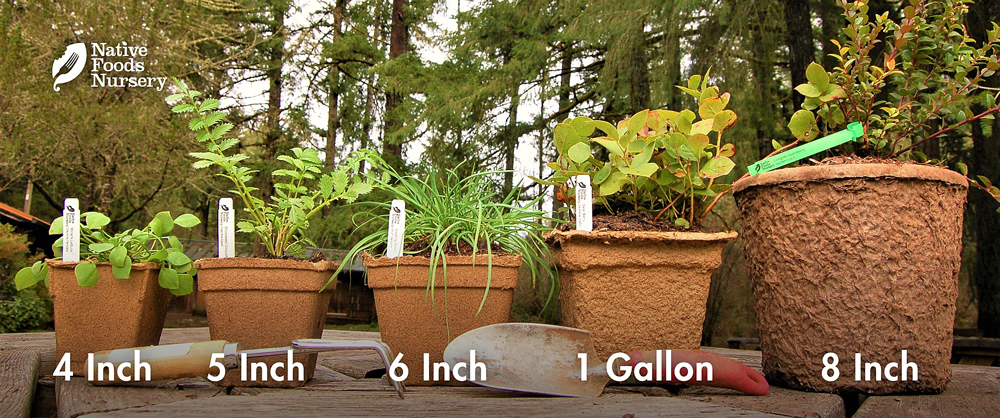Common Camas
- Current Stock:
- 0
- Other Names:
- Small Camas, Camas Lily, Swamp Sego
- Latin Name:
- Camassia Quamash
Common Camas is a stunning and iconic Northwest wildflower with a sweet, edible bulb and blue-purple flowers.
NOTE: Our native lillies naturally go dormant by June or July of each year. If you order them after that time, you'll have to wait until spring for additional growth and flowers.
Edible Uses
The sweet bulbs of the Common Camas are considered by many to be a Northwest native food delicacy. The taste is often compared to a baked pear, fig, or sweet potato, and can even used to sweeten other foods. The longer they’re cooked, the sweeter they get. Native American peoples, wild foragers, and sustainable gardeners have and continue to value this plant as nourishing food.
Camas is a major source of carbohydrates and fiber, with a small amount of protein. Bulbs can be eaten immediately after cooking, or dried for future use.
CAUTION: If harvesting from the wild, only harvest with expert advice. Especially when not in flower, Common Camas can be confused with another species called Death Camas.
Ornamental Qualities
Common Camas is not quite as large and showy as Great Camas, but is still widely propagated in the ornamental flower industry. The deep blue-violet flowers of the Common Camas are stunning, opening and closing in succession along a 12-24 inch flower stalk. At it’s base grows a rosette of long, narrow grass-like leaves. Great in flower beds, ornamental borders, and rock gardens.
Environment and Culture
Common Camas’ wild home is in wet meadows, wetlands, and moist hillsides up and down the Pacific Northwest. In the last 150 years, since the arrival of Western settlers in the region, Camas has been greatly diminished by disruptive modern agricultural practices, removal of native peoples, and extensive urban development. In certain special places, it can still be found growing along a myriad of other native wildflowers like Chocolate Lily, Tiger Lily, and Leopard Lily, as well as wet-meadow grasses like Northwest Territory Sedge and Panicled Bulrush. This is a very important plant to restore in our region.
Northwest Native American tribes today still deeply value this special plant, a foundational food which nourished their people for thousands of years. Despite great cultural losses, they continue to work towards stewarding and restoring wild populations of Camas throughout the region, both strengthening the integrity of the ecology and sustaining their cultural heritage and wisdom. These strong and recovering peoples and plants deserve our respect, gratitude, and reparations. (Learn more & how to help on our Charitable Giving page.)
Even in modern Western agricultural systems, Camas has great potential for sustainable gardening and agriculture. In fact, Luther Burbank spent years breeding hybridizing Camas to create bulbs the size of small potatoes. With a little effort, this nutritious perennial could once again be a no-till staple food of our region’s productive agricultural areas.
Harvest, Care, and Preparation
Common Camas is very low maintenance in the garden setting; it’s only requirement is it needs to dry out during the Summer months to avoid fungal disease. This flower attracts many beneficial insects, especially bees. However, be aware of deer and burrowers who also like this tasty treat.
Camas should be allowed to grow and multiply from bulblets and seed prior to harvesting. The bulbs are best dug after the plant sets seed in mid-late summer. They push themselves down as they grow and can be as deep at 6 inches. Harvest any seed and then dig deep and give a wide berth. Sift the soil between your fingers to find the white bulb, and any bulblets that might be surrounding it. Replant seed and bulblets.
Camas bulbs need to be cooked at low temperatures for at least 12 hours, allowing maximum conversion from inulin to fructose - making them sweet and sugary like a pear or fig. Native peoples have refined the art of skillfully digging the bulbs with a crafted stick and then slow-cooking Camas in an earthen oven - a finely tuned skill. It’s also effective to bake bulbs in a slow-cooker on low or in a casserole dish in the oven at 200 degrees for a minimum 12-18 hours, although if possible, its best to extend the time for up to 36 hours for an even sweeter taste. Ensure there is adequate moisture throughout the cooking process. NOTE: Eating without cooking properly can lead to bitter tastes and indigestion. Check out this recipe on a related blog for more details.
Native Range: CA, OR WA, BC, NV, MT, WY, UT
USDA zones: 3-7
Ease of Care: Easy
Deer Resistance: Low-Moderate
Light Requirements: Prefers full sun/tolerates light shade
Soil Type: Any, prefers well-drained.
Water Requirements: Moist-Wet, drying out in Summer
Pollination: Self-Fertile
Bearing Age: 3-5 yrs from seed
Size at Maturity: 12-24 inches
Plant Spacing: 6-12 inches
Bloom Time: Late Spring
Harvest Time: preferably Mid-Summer
Pot Sizing Guide







